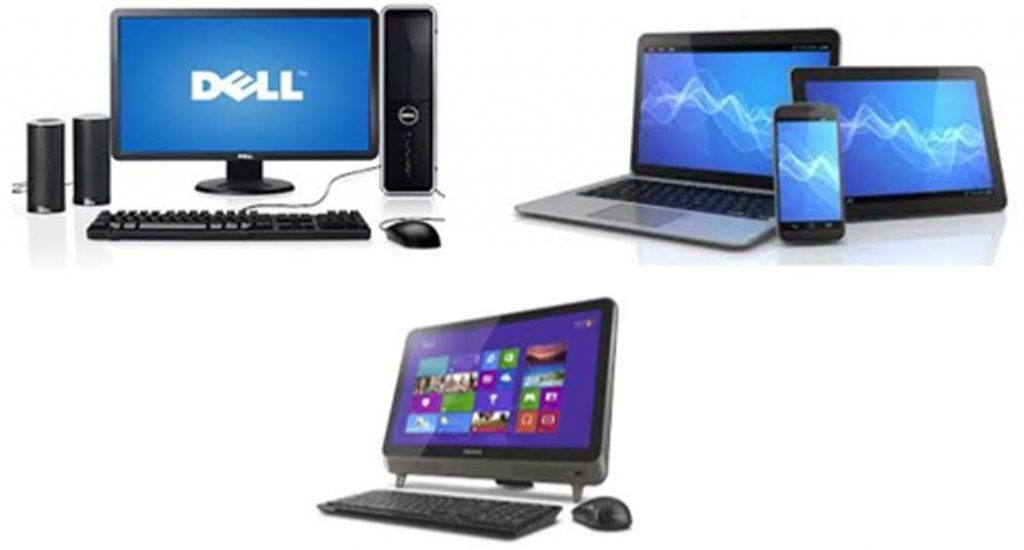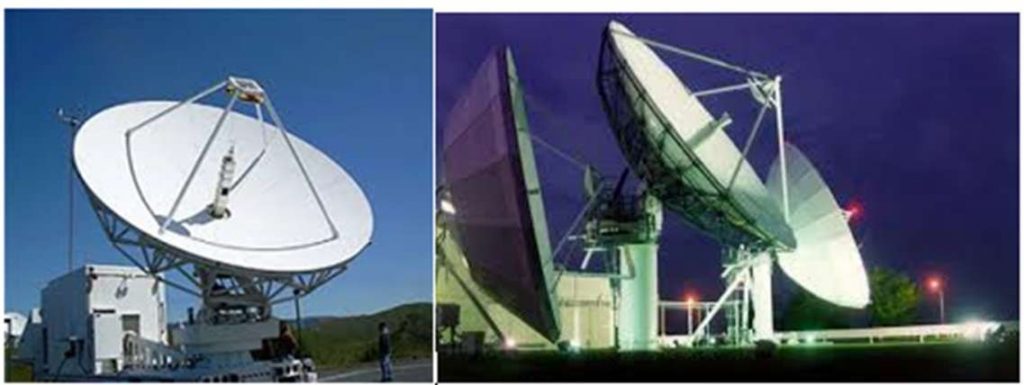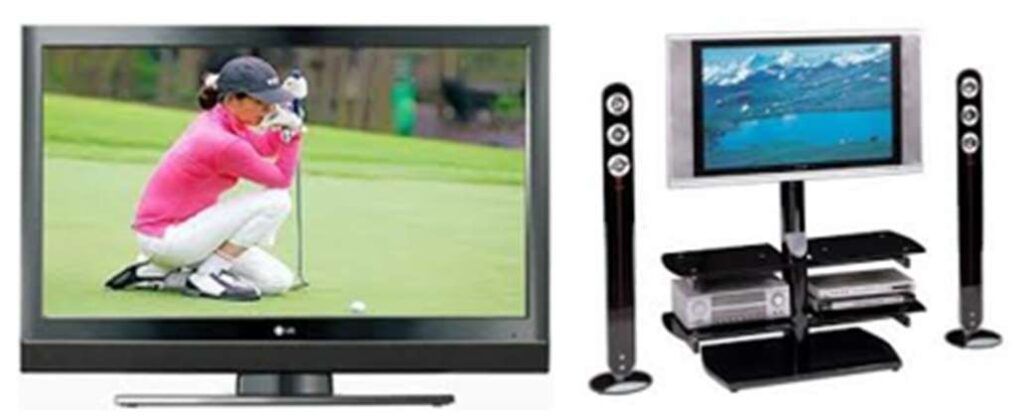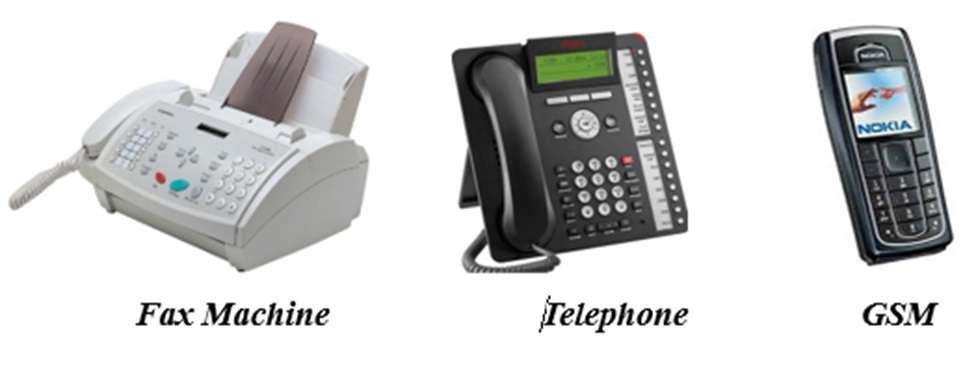The concepts of information technology and the digital divide are a requirement in basic computer studies for students. Information technology is a concept that involves the use of computers to process, store and retrieve data. It requires computer hardware, software, and network management for efficient use and management of data and information.
The digital divide is a term used to describe the gap between users and non-users of information technology. The digital divide looks at demography and ease of access to information and communication technology.
- ICT AS A TRANSFORMATIONAL TOOL
- Meaning of ICT
- Examples of ICT gadgets
- Benefits of Information Technology
- Disadvantages of Information Technology
- ICT GADGETS
- Differences between GSM, Fax machine, and Telephone
- How to create and send Messages using a Fax machine
- How to create and send Messages using GSM
- Applications of ICT in Everyday Life
- Positive Impacts of ICT
- Negative Impacts of ICT on Everyday Life
- The concept of the Digital Divide
- What is the digital divide?
- Features of Old New Economy
- Limitations of the old New Economy
- Features of the New Economy
- Benefits of the New Economy
- Notes
This article is particularly designed to assist students of Junior Secondary schools to understand the following terms:
- ICT and ICT gadgets
- How to use basic ICT gadgets
- Application of ICT in education, banking, and industry
- Positive and negative impacts of ICT, and
- The digital divide
ICT AS A TRANSFORMATIONAL TOOL
This article discusses the concepts of Information technology and the digital divide for beginners. Beginners in the field of information technology can learn basic concepts here. It also introduced the concepts of the old economy and the new economy in line with the Junior Secondary School curriculum.

Meaning of ICT
ICT means Information and Communications Technology. It is a general term used to describe devices and applications used to create, modify, store, communicate and manage information. It is simply referred to as Information Technology (IT). Some of these devices include radio, television, computer, cellular phones, etc. And some of these applications include the internet, video conferencing, Learning Management Systems (LMS), etc.
Examples of ICT gadgets
Students should be able to identify the following ICT gadgets
- Computers: Computers are important Information Technology gadgets used in information management in all works of life.

- Telephone (GSM): In Information technology, GSM means Global System for Mobile Communications. It is a standard for mobile communications developed by European Telecommunications Standards Institute that describes digital circuit-switched networks enhanced for full duplex voice telephony and data communications. It was originally developed to describe protocols for 2G (second generation) digital cellular networks.

- Cellular Networks: A cellular or mobile network is a radio/ wireless network scattered in cells over land areas. It usually has a fixed location transceiver which enables mobile phones to receive and send voice telephony and data communication. Major telecommunications providers install cellular networks all over the country to give mobile users access to voice and data communications.

- Satellite Communication: It uses artificial satellites to provide communication links by receiving and transmitting signals from and to the earth station. The communication satellites carry analog and digital signals: sound, data, and images to and from different world locations. This is important in global telecommunications.

- Television: Television is an important part of information and communication technology (ICT). It enables individuals to watch popular shows and events recorded and transmitted by different TV stations all over the world. It is a popular telecommunication medium that is used for receiving moving images and sound in real-time. TVs are owned by most households in different locations. It can transmit images in black-and-white or color format.

- Internet: The Internet is a global network connecting millions of computers. It enables individuals in all works of life to transmit and receive data and voice through computer and internet-enabled phones. It completely revolutionized the world’s system of communication.

Benefits of Information Technology
- With ICT we can have timely, better, and cheaper access to knowledge and information.
- It speeds up transactions and processes
- It provides a better, easier, and more modern means of peer and family interactions
- It eliminates the barrier of distance and location in business transactions and learning
- It creates better and more innovative ways of communication and interactions.
Disadvantages of Information Technology
- Increased efficiency and automation brought about by ICT usually lead to job losses.
- Communication through voice telephony or instant messaging does not take into account facial expressions and body language.
- ICT provides a range of ways for fraudsters to gain access to personal information.
- It has also made access to damaging and morally destructive information available through various pornographic, casino, etc websites.
- ICT through globalization leads to the loss of one’s culture. Weaker cultures are lost to more domineering cultures.
ICT GADGETS
This section discusses how students will use some communication gadgets such as telephone, fax, etc.
Differences between GSM, Fax machine, and Telephone
- GSM is portable and can be carried from one place to another, facsimile (Fax machine) and a telephone cannot easily be carried from place to place.
- GSM and telephones are used to make voice calls while fax is usually used to send and receive hard copy messages, though modern fax machines attach telephone to it and can also send messages to emails.
- Fax machines transfer both text and images in a more secure environment that is more difficult to be intercepted by fraudsters than GSM.
- A fax machine consists of an optical scanner for digitizing images on paper, a printer for printing incoming fax messages, and a telephone for making the connection while the telephone and GSM are alone.
- The GSM can be used to make a voice call, send SMS and browse the internet, but Fax and a telephone cannot be used for all.
- A fax machine can be used to send and receive phone calls and print documents but GSM and telephone cannot print documents. Though GSM can be used to print using e-print technology.

How to create and send Messages using a Fax machine
The fax machine must have a dedicated phone line for it to function.
- Ensure that the fax machine is properly set up and turned on.
- Place the document or image you want to send in the fax machine’s document feeder.
- Press the buttons on the fax machine’s keypad to dial the telephone number of the fax machine on the receiving end. A fax number is dialed the same way a regular phone number is dialed. Please, include any long-distance/ area codes, and/or corporate numbers (such as dialing “7” or “9” for an external number)
- Press the Send button (usually the green button).
- Wait for the fax to transmit. When the fax is done transmitting, the fax machine will either display “message received” and/or print a confirmation page to show that the transmission was successful. If the message did not go through, it will display and/or print an error message.
- Remove your documents when done.
How to create and send Messages using GSM
It is important to know that the method discussed here may differ depending on the phone model.
- From your phone’s main menu find the Messages or Messaging icon or application. Then select Text Messaging.
- Choose New Message or Write Message or click on the new message icon that looks like (+), and a new message window will open.
- In the To field, type in the phone number of the recipient. You can also select a contact from your phone’s address book by typing in the receiver’s name in the field to see if it will fill in the number for you.
- Finally, type in your message in the message field and press Send.
The instructor would teach the students how to make a phone call, receive a message and save a contact using GSM.
Applications of ICT in Everyday Life
Computers are used in virtually all sectors of the economy and in our day-to-day activities. Some of the uses of ICT in different sectors of the economy and how it affects our daily lives are summarized below.
ICT in Education
Computers are used in the education sector because they create Interactive experiences, and enhance learning and Cognitive development.
- Teachers use computers to research teaching materials, participate in online forums and online conferences as well as aid their teaching.
- Students use computers as reference tools and browse the Internet to look for information.
- Researchers use computers to collect and process data.
- School administrators use computers for administrative purposes to make sure that the entire operation runs smoothly.
- Through ICT, anyone can obtain a degree in education from any online degree-awarding institution without distance as a barrier. Distance learning is where students can access teaching materials from all over the world.
- ICT assists scientific experiments by providing the ability to perform ‘impossible’ experiments’ by using simulations.
ICT in Banking
The computer is the nerve center of the banking system around the world. It functions to control the entire banking system including ATM and E-banking Services.
- Customers can make any transactions within 24 hours through online banking.
- Businessmen can save time by using the online services offered by banks. They can access company accounts for loan applications, and business transactions and update their cash flow at any time in the comfort of their office or home.
- Bank administrators can oversee the entire banking activities. Examples are reconciliations, inter-branch transactions (IBT), telegraphic transfers, and others by referring to the banking system.
- Customers can make transactions at any point in time using their phones through mobile banking which facilitates a cashless society.
ICT in Industry
Computers are used to facilitate production planning and control systems. They are also used in support chain management and to help in product design in the industrial sector.
- Workers use a machine that is interconnected to computers to enhance operation. In some productions, robots are used to take over jobs that are dangerous to human beings.
- Administrators use computers to oversee the entire operations of the plant or factory.
- Computers are used to detect specific errors or defects that occurred in the process.
- Quality control officers use the computer to control and maintain the quality of products in the manufacturing pipeline.
ICT in Commerce
E-commerce helps in boosting the economy. It makes buying and selling activities easier, more efficient, and faster. The application of e-commerce is enhanced through computers, the internet, and shared software.
- Customers use computers to be connected online with suppliers to purchase products. This method can save time and cost as they do not have to go to any outlets.
- Through electronic mail, quotations can be sent between customers and vendors and business deals concluded. Also, ordered products can be delivered without the physical presence of both parties.
- Suppliers use computers to keep track of their transactions. All products are bar-coded and can be read by the computer scanner to help in determining prices and managing inventory.
- Employees use computers and telephones to communicate with their customers for any inquiries. The system helps employees to get the latest updates on inventory to be informed the customers.
Positive Impacts of ICT
Communication and Information Management
- With the Internet, news or messages are sent via e-mail to friends, business partners, or to anyone efficiently. People can also browse through different media websites to obtain the latest information on news, sports, politics, and business.
- With the capability of bandwidth, broadband, and connection speed on the Internet, any kind of information can travel fast and in an instant. This saves time and cost while everything would be under control.
- The internet allows people to have access to large amounts of information at a very low cost.
- Using the computer, internet, and appropriate software, information could be accessed and retrieved from anywhere and at any time.
- With the advancement of ICT, information can be shared by people all around the world.
- People can share and exchange opinions, news, and information through discussion groups, mailing lists, and forums on the Internet.
- ICT technology has created the term paperless environment. This term means information can be stored and retrieved through digital media instead of paper.
Job Creation
Information technology has helped a lot in the field of jobs. The ICT industry introduced some unique and rare jobs which were not very popular even in the late 1980s. This field has appeared as a solution to increase the number of employees and reduce the number of unemployment in our society.
The Information Technology industry created a lot of job facilities for people who have skills in IT. It has created jobs like – Web developers, IT network administrators, computer game designers, IT technicians, and Database administrators. The IT industry also helped many people to become successful self-employers.
For example-Steve Jobs was the founder of Apple Inc. along with Ronald Wayne. Bill Gates is the founder of “Microsoft.” Mark Zuckerberg the founder of the famous social networking site “Facebook.” This is also helpful because they have also employed people in their own company which is also part of the IT industry.
Crime and Policing
ICT has introduced technologies that prevented people from committing a crime. Such technologies as CCTV (Closed Circuit Television) cameras, GPRS (General Packet Radio Service) systems, and using the database for finding criminals’ information are some unique technologies that cannot be possible without the blessing of ICT. GPRS can be used to track someone’s stolen car or mobile phone. These technologies make our lives safer and easier to live.
Negative Impacts of ICT on Everyday Life
ICT has both positive and negative impacts. Stated above are the positive impacts of ICT in our daily lives. However, it will be incomplete if we fail to highlight some negative influences ICT has had on society in general.
- Nowadays, people tend to choose online communication rather than real-time conversations and this has reduced personal interaction.
- Disadvantages regarding the use of personal computers are as follow: If someone uses the computer for a long time it may lead to a headache and it can cause neck pain. Computer users also are exposed to bad posture, eyestrain, and physical and mental stress.
- Some teenagers invest much time in computer games instead of studying or taking part in different physical activities. Some also get stretched if they get bullied on the internet, which may stop them from going outside, and sometimes feel scared to talk to someone.
- ICT is argued to have taken away many jobs in society. For example, a greater number of people are increasingly used to shopping online and this has led to a reduction in floor jobs of sales girls. Some businesses which cannot face intense competition are closing down. A good example is that of Comet which has gone into administration because it cannot cope with the online competition from different online shopping like Amazon, eBay, and Barnes & Noble.
- In education, it has been observed that people rely on the Internet so much that they believe in everything that is written on the web page, and this has taken over the functions as well as the jobs of library attendants. Also, fewer people visit the library since favorite books can also be easily obtained from the internet. So libraries are shutting down because people are relying on the Internet library.
- Another major disadvantage created by the technology system is increased cybercrime. Anyone who knows how to create a program can hack other people’s devices using viruses, Phishing, and other malicious software.
The concept of the Digital Divide
What is the digital divide?
The digital divide is the gap between those who have access to and control of technology and those who do not. According to Compaine,[1] it is the perceived gap between those who have access to the latest information technologies and those who do not. This includes disparities in access to telephones, personal computers, and the internet across demographic groups.
According to DiMaggio and Hargittai,[2] the concept should deviate from the digital divide to digital inequality. Digital inequality refers to an imbalance among those with formal access to the Internet. They went further to identify five dimensions of digital inequality as equipment, the autonomy of use, skill, social support, and the purposes for which the technology is employed.
- : This refers to disparities in the availability of hardware, especially those that connect people to the web. In Nigeria, it is a known fact that people in more developed cities like Lagos, Abuja, and Port-Harcourt have high-speed internet connections than their counterparts in less developed cities. This creates an imbalance in the use of technology even when people have access to technology. While those enjoying 4G & LTE technology have better internet access, those with 2G, EDGE, and GPRS have limited access to the web. Such people cannot derive the full benefits of using the internet.
- : We all know that in Nigeria, the gap between the elites and the middle class is wide. This creates disparities in the autonomy of use. Those who are financially buoyant can be able to have access to technology at home, at work, and at school, while others might have none. Though mobile phone penetration has made access to the internet easier, many people could not able to own such internet-ready phones, while those who have may not be able to subscribe for data, owing to the high cost of internet connection in Nigeria.
- : Inequality in technical know-how could be a direct function of the above two. Skills can be acquired through training or experience. In either case, financial constraints and access to technology equipment can affect one skill acquisition. The extent to which users are trained to find and evaluate the information they seek is important. DiMaggio and Hargittai highlighted four skills that are necessary for technology users:
- Methodological skill, which teaches techniques on how to log on, conduct searches, and download information
- Background knowledge, which teaches techniques on how to design search algorithms (for search engines). This skill is helpful to Web users but not to Internet users.
- Integrative knowledge teaches how the Webworks
- Technical knowledge, which teaches skills in software, hardware, and networks. These skills are necessary for troubleshooting the problems that emerge from the use of technological equipment.
- : This refers to the ability to gain support from more experienced technology users. The internet makes social support easy, as people can connect to blogs and forums that will enable them to gain insight into technology from experts. Also, social support can be gained from teachers, family, and friends. The availability of social support helps to deepen one’s knowledge and skill in the use of technology.
- : Different people use the internet for different purposes, varying from money-making, education, research, e-commerce, etc, to entertainment. According to DiMaggio and Hargittai, there are different kinds of uses, and not all uses of the internet are equal. High priority is placed on uses that increase economic productivity (e.g., skill enhancement, learning about employment opportunities, consumer information, or education) or political or social capital (e.g., using the Internet to follow the news, gathering information relevant to electoral decision-making, learn about public issues, engage in civic dialogue, or take part in or organize social-movement activities), and those that represent the consumption of entertainment.
Features of Old New Economy
The old new economy refers to an economy or group of industries that do not rely on technology and technological advancement. In such economies and industries, though there have been innovations and development in technology and equipment, fundamental operations have remained the same for years. They still experience growth but at a slow rate. Examples include bread baking industries, steel & automobile industries, energy, blue-chip companies, etc.
- Operations in the old new economy are usually mechanical. By mechanical, we mean that most operations are performed by machines with people serving as their drivers. People are needed to operate the machines to enhance the precision of operations.
- Due to the mechanical nature of operations, the old new economy is highly labor-intensive. Therefore, more manpower is employed to carry out the operations in this economy.
- Due to 1 & 2 above, the old new economy is adjudged time-consuming. Time is required to learn the procedures and operations required for production due to limited technology. Also, because operations are largely performed by machines, skills are required for the operation of such machines. Sometimes, the speed of operation is usually slow, thus, increasing the total time of completion.
- The old new economy is limited by time, space and distance. This is true because most of the operations require the physical presence of those involved. Most industries are located outside the residential areas, which gave rise to the localization of industries. These most times help to control pollution.
- The major technological drivers of this economy are automation and the mechanization of operations.
- The old new economy is bureaucratic in nature with a long-range organizational chart and span of control.
- There is a division of labor in such an economy because most workers are required to specialize in the fields of operations.
Limitations of the old New Economy
- The bureaucratic nature of the economy or organization which requires traditional commands and control usually slows down production. The speed of output is usually low.
- The workforce is characterized by skilled, semi-skilled, and unskilled labor with varying levels of specialization, which leads to the monotony of work.
- Due to the bureaucratic nature of the economy, decision-making is usually vertical. This slows down the decision-making process.
- The business pace and market changes in such an economy are slow and linear in nature.
- The economy is largely limited by time-space and distance.
Features of the New Economy
The new economy may be defined as an economy or organization characterized chiefly by the predominance of services and technology. It can be simply described as the knowledge economy, an information-driven economy, a networked economy, and/or an economy. According to IMF, the new economy can be defined as “one characterized by higher long-term growth that is due to a permanently higher growth rate in productivity stemming primarily from the production, adoption, and continued diffusion of ICT”.[3] These definitions explain that we now live in a knowledge-based global economy. Therefore, the virtual economy of computers and electronic commerce replaces the old labor-intensive economy involving manufacturing and the movement of physical commodities.
- The new economy is highly digitized. Advancement in technology leads to speed and efficiency in production.
- The new economy is capital-intensive. Unlike the old new economy where more manpower and more time are required, in this economy, due to digitization and advancement in technology, operations require more digital equipment, less manpower, less time, and increased efficiency in production.
- Due to digital equipment such as broadband internet connections, cloud technology, use of tablets, etc, time, space, and distance are irrelevant in this economy.
- This economy is technology-driven. It is the role of technology in this economy that made the economy knowledge-based and information-driven. The rate of technological innovation leads to speed and efficiency in production, hence, the world is becoming a global village.
- This economy is knowledge-based as previously stated. In this economy, industrialization is not the principal driver, but technology, therefore, knowledge of the use of such technologies is needed to enhance efficiency in production. When such knowledge is missing, society will be regarded as backward. Also, knowledge-based activities lead to creativity and innovations which may lead to productivity growth, hence, knowledge could be counted as a factor of production in this case.
- The new economy is also information-driven. Information plays a vital role in production. Someone who is not informed is deformed. An inadequate supply of information can lead to business failure, loss of production, and loss in sales.
Benefits of the New Economy
- Due to the large information at her disposal, with low capital, one can start a business in the new economy.
- Due to its knowledge base, there are increasing innovations that create new jobs for the populace.
- Due to technological innovations, there is high productivity growth in the new economy.
- In the new economy, products are generally inexpensive. In the old new economy, new products are usually expensive and gradually becomes available and cheap with time but in the new economy with increased competition, new products are generally inexpensive.
- In the new economy, equipment is smaller in size. For example, consider the size of the first desktop computers and their size now.
Notes
[1] Benjamin M. Compaine, The Digital Divide: Facing the Crisis or Creating a Myth? (Cambridge: Massachusetts Institute of Technology Press, 2001), ix.
[2] Paul DiMaggio and Eszter Hargittai. “From the ‘Digital Divide’ to ‘Digital Inequality’: Studying Internet Use as Penetration Increases.” Center for Arts and Cultural Policy Studies. Princeton University Working Paper Series, No. 15, Summer 2001.
[3] Paula De Masi, Marcello Estevão, and Laura Kodres. “Who Has a New Economy?” Finance & Development: A quarterly magazine of the IMF. Volume 38, Number 2, June 2001, 75 – 85.





Thanks, this was really helpful it gave me everything I was looking for
You’re welcome, Lilian
Wonderful!! It gave me everything i was looking for
Thank you, Christal.